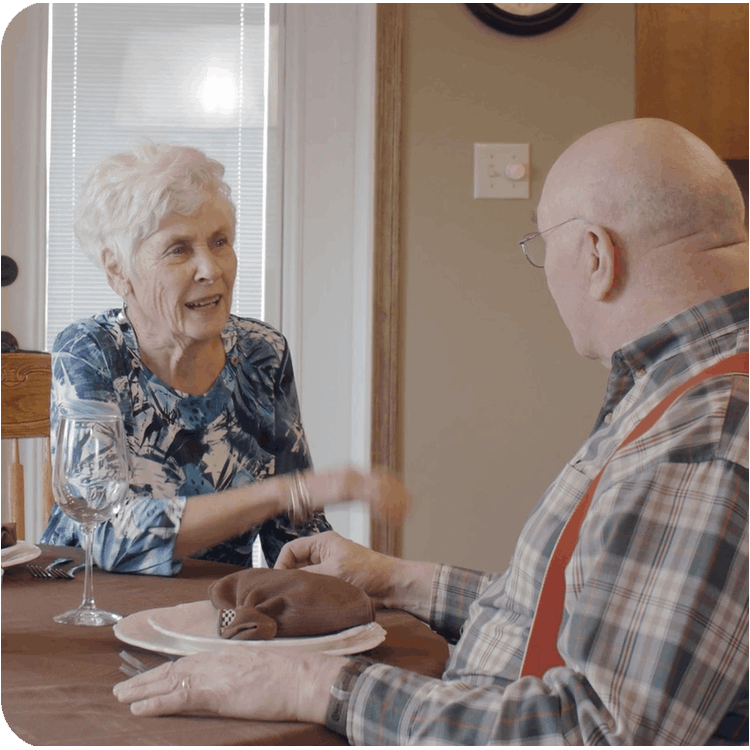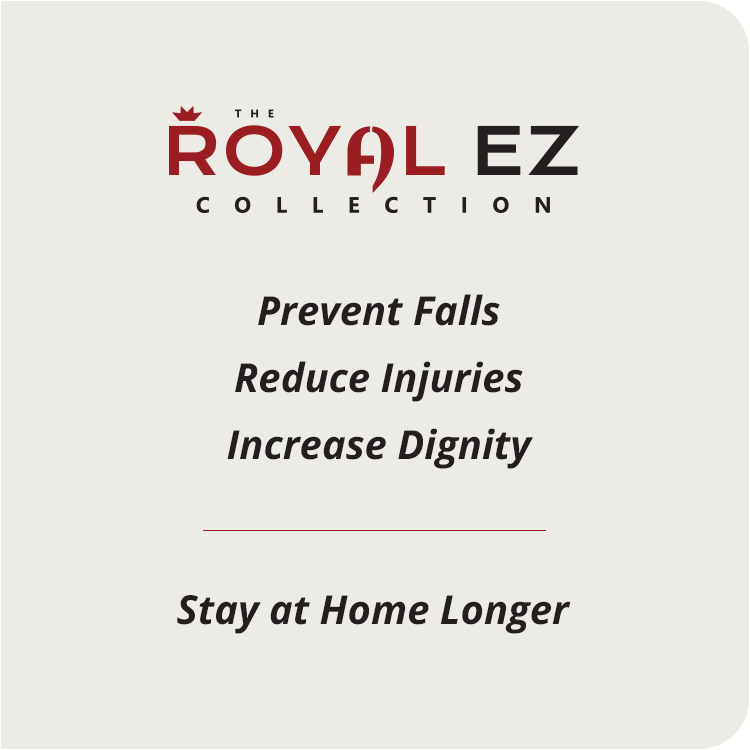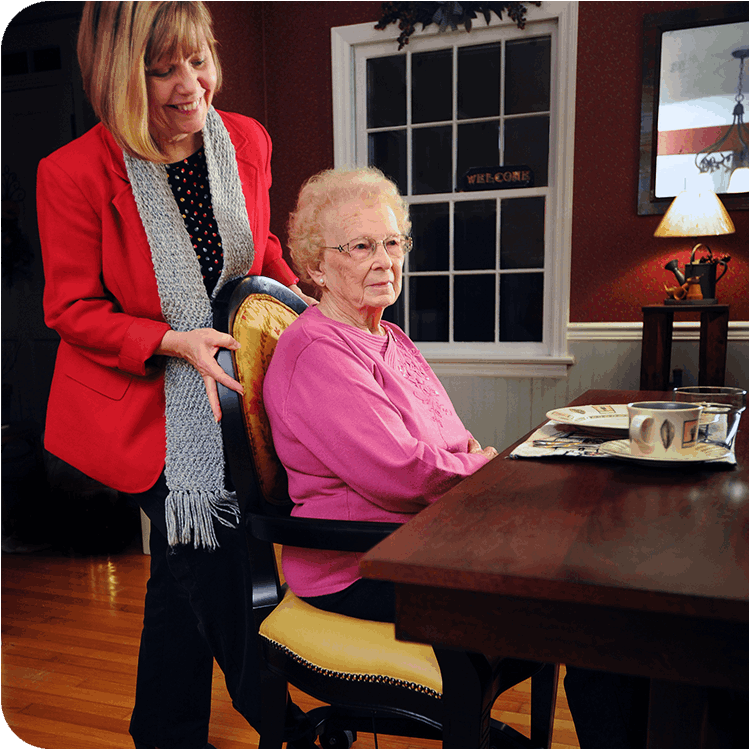
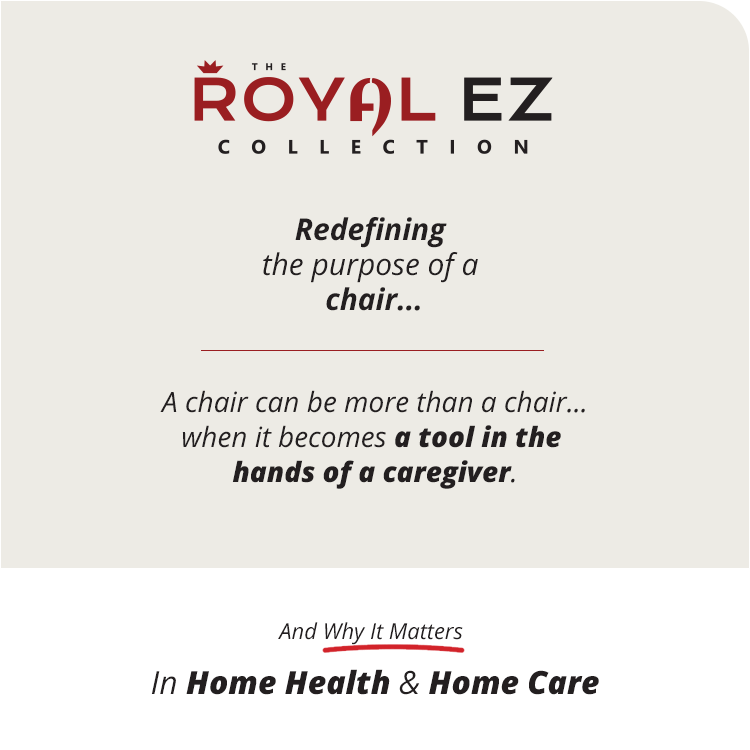


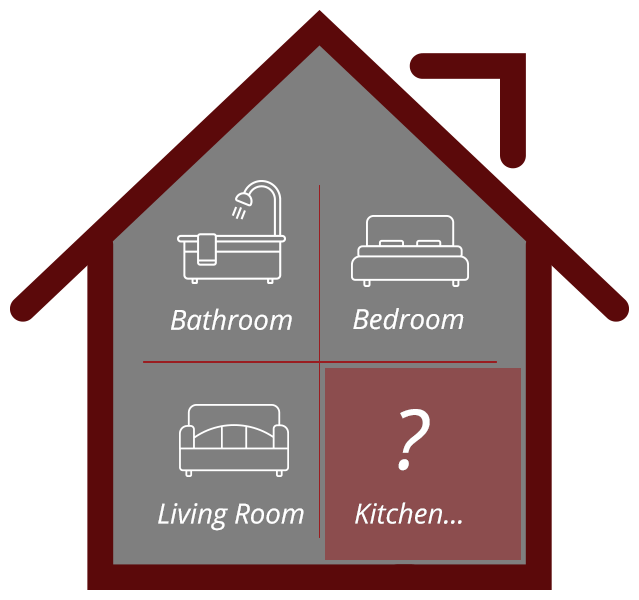
Question: How does a seated person get moved up to the table without risk of injury to the family caregiver?
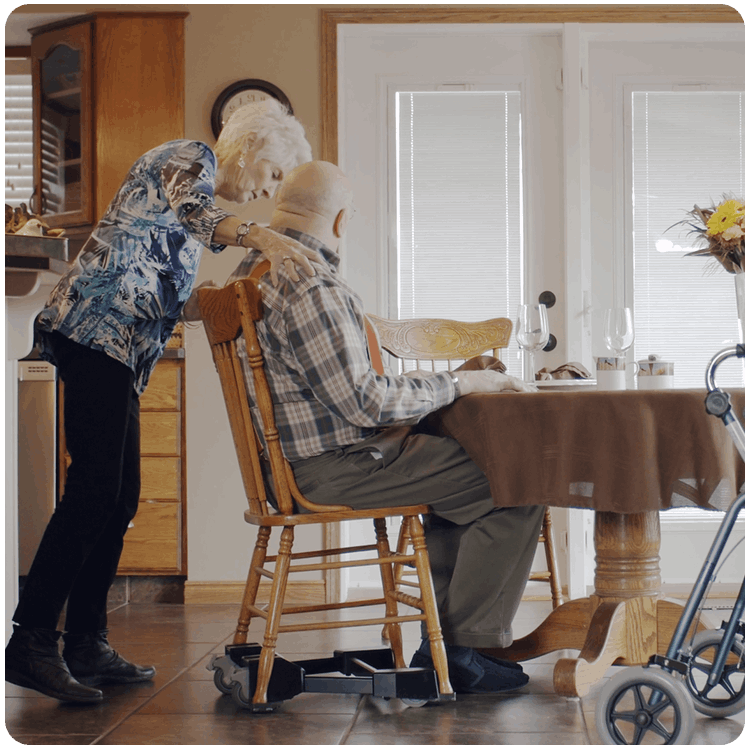
Innovation #1: Eliminate Table Interference
Innovation #2: Move the Chair...Not the Person
Innovation #3: Retrofit (Attaches to existing chairs)
Action: Swivel-Lock...Roll (Inline) and Brake for Safety
Action: Roll (360°) and Brake for Safety
Action: Roll (360°) and Brake for Safety
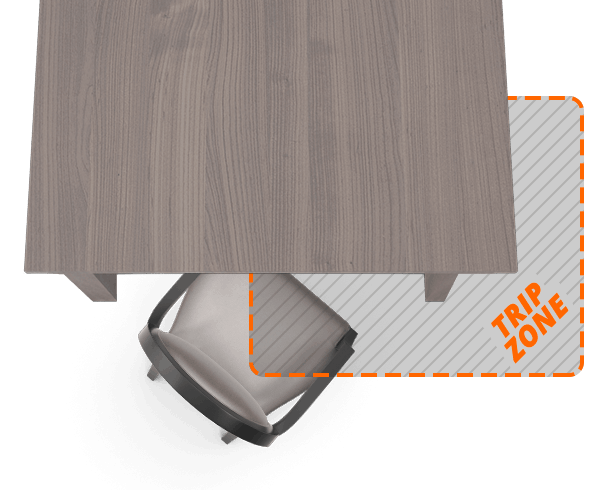
Loved ones are expected to:
(1) shuffle sideways
(2) step backwards
(3) lean on the table
for balance as they are helped into the chair.
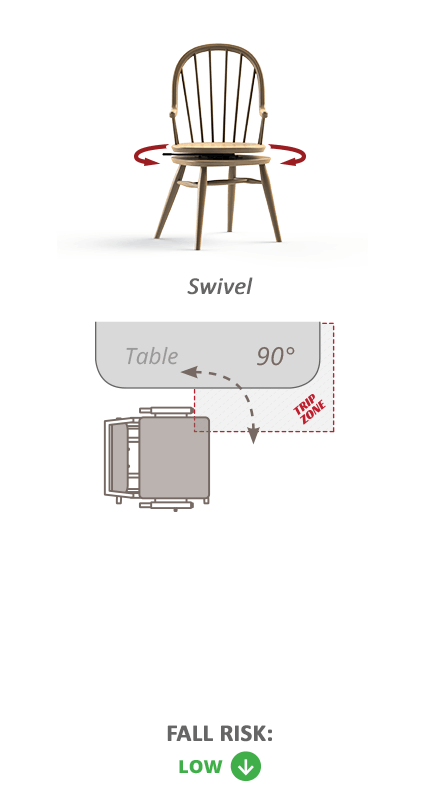
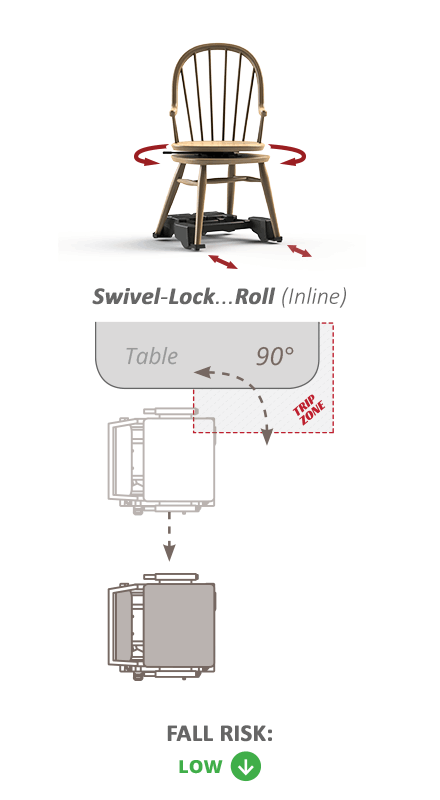
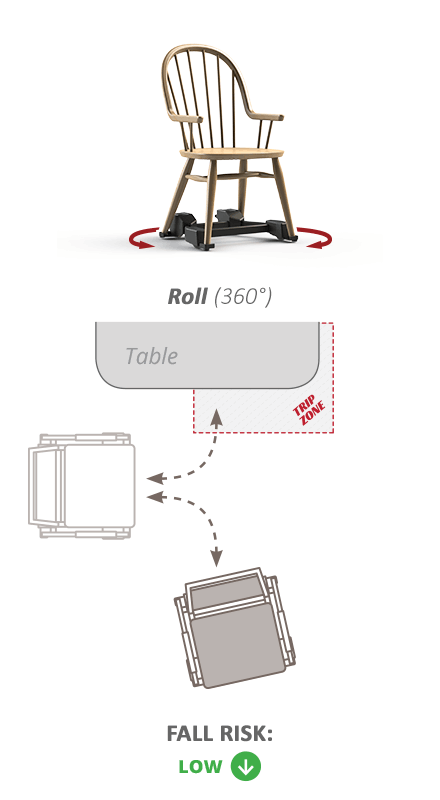
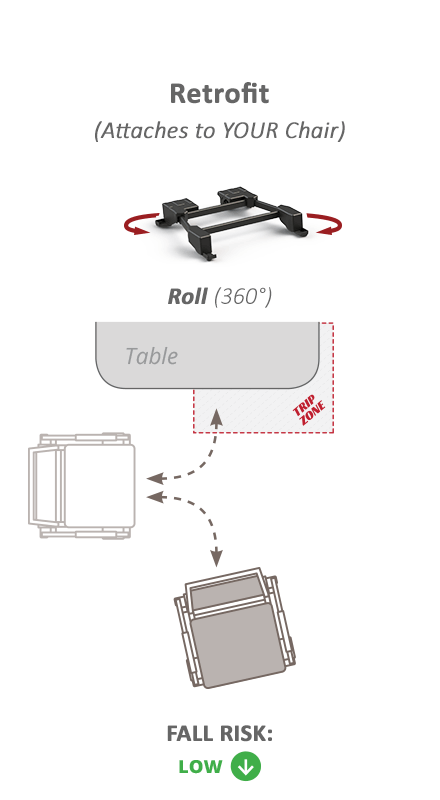
Eliminating table interference
Action: Swivel-Lock
Eliminating table interference
Action: Swivel-Lock
Rolls (Inline)...and Brakes for Safety
Move the Chair...Not the Person
Action: Rolls (360°)
Brakes for Safety
Move the Chair...Not the Person
Action: Rolls (360°)
Brakes for Safety
Allows families to share meals, even with a member in a wheelchair.
Action: Tops Lift…Extend Independently
"I didn't expect mealtimes to be so difficult!"
